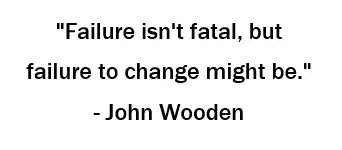Anyone involved in the hiring process knows that hiring comes with a lot of unknowns. Each candidate has their own skills and strengths, their own job histories and qualities, their own work styles and behavioral quirks. Hiring professionals are expected to identify all of these things in order to select the best fit for the job, all within a short period of time and with relatively limited tools. But people are complicated, which makes the hiring process equally complicated. Sooner or later, you’re going to hire someone who ultimately doesn’t work out.

So how can you learn from your hiring mistakes? Here are a few basic steps you can take:
1. Identify why the hire didn’t work out
The first way to approach this is simply by evaluating why this person either quit or was let go. Did they not have enough of the required skills? Were they unable to successfully pick up on training? Were they prone to a few too many mistakes, or maybe they made one big mistake? Or maybe they left due to job dissatisfaction or lack of job fit? Perhaps even more than one factor was at play. There are too many reasons to count for why any given hire didn’t pan out, but the main goal is to at least make an educated guess.
2. Brainstorm ways to spot warning signs in the hiring process
Next, take your guess as to why a hire didn’t work out and apply it to your hiring process.
Let’s say that one of your hires couldn't pick up on training and ultimately wasn’t able to successfully complete the job’s day-to-day responsibilities. There are a couple of ways to respond to this. One is to change the requirements in your job description or be more strict about who you invite to an interview. Maybe you originally didn’t require experience but might want to start requiring 2+ years of experience in that role. One unintended consequence of this change, however, is that it could lower the number of people who apply.
Another option is to administer pre-employment assessments in the hiring process to get an objective measure of your candidate’s learning ability. Cognitive aptitude tests, for example, are significantly more predictive of job performance than work experience, education, or unstructured interviews because they demonstrate an individual’s ability to learn and adapt quickly on the job.
And yet another option would be to implement longer training sessions or make modifications to your onboarding process to ensure better success. This option would likely only be worth it if multiple people were struggling with training, as opposed to one individual.
This brings up another important point: while a bad hire can be a great learning experience and can help you adopt new and improved hiring tactics, it’s critical that you don’t make drastic changes to your hiring process based on a single bad hire.
3. Try to measure your results in aggregate
Sometimes a single bad hire can leave enough of a bad taste that it causes you to readjust your hiring process to prevent it from ever happening again. After all, bad hires (and especially the dreaded toxic hire) can have a damaging (and costly) impact on your organization, something that no one would like to repeat.
But ultimately your company’s hiring success isn’t based on one or two bad apples; it’s based on the aggregate success of your hiring team. If you do decide to implement changes in your hiring process, either by switching up the application process or incorporating new screening and assessment tools, it’s important to make sure that your entire team’s hiring success improves, or at least remains constant.
For example, let’s say one of your employees lied on their resume, leading you to offer them a job with far greater responsibility than they were capable of handling, and causing a huge negative impact on your company’s bottom line. If you were to use this single experience to decide not to use resumes any more in the hiring process, you might want to verify that this doesn’t impact the success of your entire hiring process moving forward.
This is an extreme example, but it’s important not to overreact to a single bad hire by making an extreme change to your hiring process that may not align with your overall hiring goals. Remember, your goal isn’t just to reduce your bad hires; it’s to improve your hiring effectiveness across the board.
Making a bad hire is an unpleasant experience for any hiring professional, but the silver lining is that every hiring mistake presents an opportunity to strengthen your hiring process in the long run.





